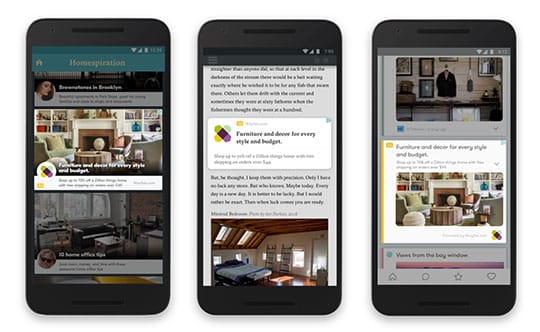With over 1 billion websites on the Internet today, the importance of SEO for online businesses cannot be underestimated. The term “online business” may seem outdated. Because, if your business isn’t online and not found on the web in 2017, it simply doesn’t exist. Search engine optimization isn’t about stuffing your website with keywords anymore, but this ever-evolving field — which is part business, part marketing, and part technology — is more relevant than ever.
With the new year approaching, business and marketing magazines are already listing dozens of SEO tactics you have to use in your 2018 marketing strategy. As an alternative, here are three simple common-sense approaches to SEO that any business can use to increase traffic and web conversions today.
1) Quality Content: Write for people, not for Google.
Of all the SEO myths that exist today “keyword stuffing” is the most prevalent. Keyword stuffing is a term used to describe the practice of packing a page with specific words in an attempt to trick Google’s algorithm into giving the page a higher ranking.

When this practice is abused, the website’s pages and blog posts don’t make sense to the people reading them. Words are often out of context or awkward search terms are crammed into sentences that are grammatically incorrect. This results in a high bounce rate. The bounce rate is the number of people who click on your link and then immediately hit the “back” button, indicating what they found on the web was not what they expected based on the search results. The bounce rate is one of the several factors that Google has been using since 2004 to determine if a site is guilty of keyword stuffing.
“There are all these weird and wonderful ‘rules’ about keyword density in content,” writes Kissmetrics SEO Expert Claire Broadley in 50 Reasons Your Website Deserves to Be Penalized by Google. “The truth is that none of these rules are proven, and a very high keyword density is a flag for poorly written content.”
Instead, write consistently and write naturally. Produce quality content that your customers would find helpful. When choosing blog post topics, start by answering questions your customers might have. You can expand your topic selection by creating a customer persona and searching for volume and competitiveness of long-tail keywords.
Quick Tips:
- Write consistently and naturally.
- Answer your customer’s questions.
- Write with the goal of building trust, not selling.
2) Effective Link building: Find your customers where they live.
We’re sorry to disappoint, but you can’t write five blog posts and sit back and wait for the customers to roll in. You’re going to need to build external links — links from other websites that link back to your website. This practice greatly improves your website’s ability to rank higher in the search. However, if you’re focusing on quantity over quality in an attempt to win over Google’s algorithm, this will surely disappoint you. Link building isn’t a numbers game anymore. The focus should always be quality.

“When you’re linking to link farms or ‘bad neighborhoods’ of low-quality websites, it will negatively impact your rankings,” writes SEO expert Tom Woodley in an article on black hat SEO tactics, “The Google algorithm is so sensitive to the context that it’s become important to be selective about your guest posts.”
Find your customers where they live. Write guest posts for credible, selective websites that your customers actually visit. Be selective. In addition to building external links, do your due diligence and determine where your customers are active on social media. Develop a presence and engage your customers. Leverage the social aspect of social media to build a relationship with your audience and encourage sharing. This will help your business to get found easily on the web withing local customers.
Quick Tips:
- Be selective about guest blog posts.
- Share your content on social networks and websites that your customers traffic.
- Don’t just publish content. Engage your audience in social media and build relationships.
3) PPC Ads: Localize ads for higher conversion rates.
Pay-per-click (PPC) ads are a great way to enhance your SEO efforts by increasing your site’s visibility. Since you have already searched for the keywords and search terms that are most relevant to your brand and niche, these will be simple to set up and you can see immediate results.
It is important to note that far more people click on organic search results than they do on ads. But, when people are actively shopping for a product or service, PPC ads outperform organic search results. Paid search visits have a 35% higher conversion rate for e-commerce websites than visits from organic search.

To boost the conversion rate further to get found easily on the web, localize your ads for different markets whether you’re targeting internationally or locally.
“Despite living a global economy, many customers only care about what’s happening in their neighborhoods and cities,” says Shayla Price of localizing campaigns to increase conversions. “Work with your team to develop campaigns that touch the hearts of your consumers. You must talk like the locals.”
Beyond geographically targeting your PPC ads with city and region names, make sure that you are using the correct nomenclature for that particular part of the country. If your ads include images or videos, purchase the rights to the imagery by photographers in that region. You can use Google’s local search to find region-based photographers. Consumers are more likely to connect with and trust a brand that relates to them on a personal level.
Quick Tips:
- Target your PPC ads geographically.
- Use the correct dialect for the city or region you’re targeting.
- Leverage photos and videos in the region by a local photographer.
This article is written by Woodley Marketing. Woodley Marketing is a Digital Marketing agency based in London, U.K. Follow them: Facebook | Twitter.



